Edge Gateways include basic load balancing capabilities. Load balancing in vCloud works by first setting up a pool of hosted servers which can receive traffic, and then creating a virtual server which distributes that traffic in an even or weighted way between those servers.
Create the Server Pool
Navigate to the Edge Gateway in vCloud, then right-click and select “Edge Gateway Services”. The Load Balancer tab has two sections: Pool Servers, and Virtual Servers. To set up a new Load Balancer instance, select “Add…” under “Pool Servers”.
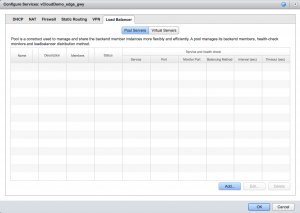
On the first screen, name the pool as shown below, then select “Next”.
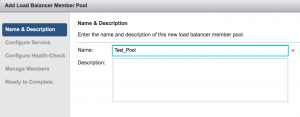
Configure the services that the load balancer will handle, then select “Next”. In this case HTTP was configured on port 80.
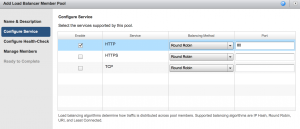
Configure the Health-Check for the selected services as shown below, then select “Next”. The Monitor Port can be left blank.
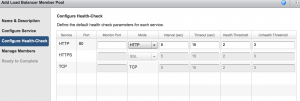
At the next screen, select “Add” to add a new member server. Enter the internal IP address of the server, and enter the ratio weight (if applicable). Enter ports for each Service and the Monitor for those services as shown below, then select “OK” to add the member.
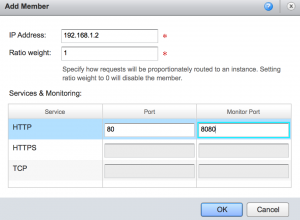
Repeat for each member, then select “Next” when the pool is complete. Check the information on the last screen, and select “Finish” to complete the pool.

Create the Virtual Server
After building the Server Pool, select the Virtual Servers tab at the top of the Load Balancer tab to build a Virtual Server.

Select “Add” to open the Virtual Server addition window. Name the server as shown below. Apply the Virtual Server on the PvDC’s external interface (rather than the vDC’s internal) to give the server outside access, then enter an external IP address for the server. Please see this article for more information on finding your external IP addresses. Select the same services that were configured in the Pool setup, ensure that the “Enable” box is checked, and select “OK” to add the Server.
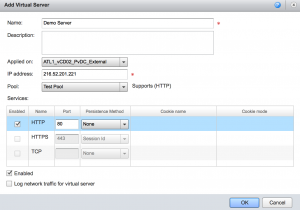
Once the Virtual Server has been added, make sure that there is a matching Firewall Rule to allow traffic. This can take any number of forms depending on what types of traffic need to make it into the Virtual Server. Please see this article for more information on Edge Gateway Firewall Rules.

Once traffic begins to flow, you can monitor your Load Balancer from the Edge Gateway Services window.
